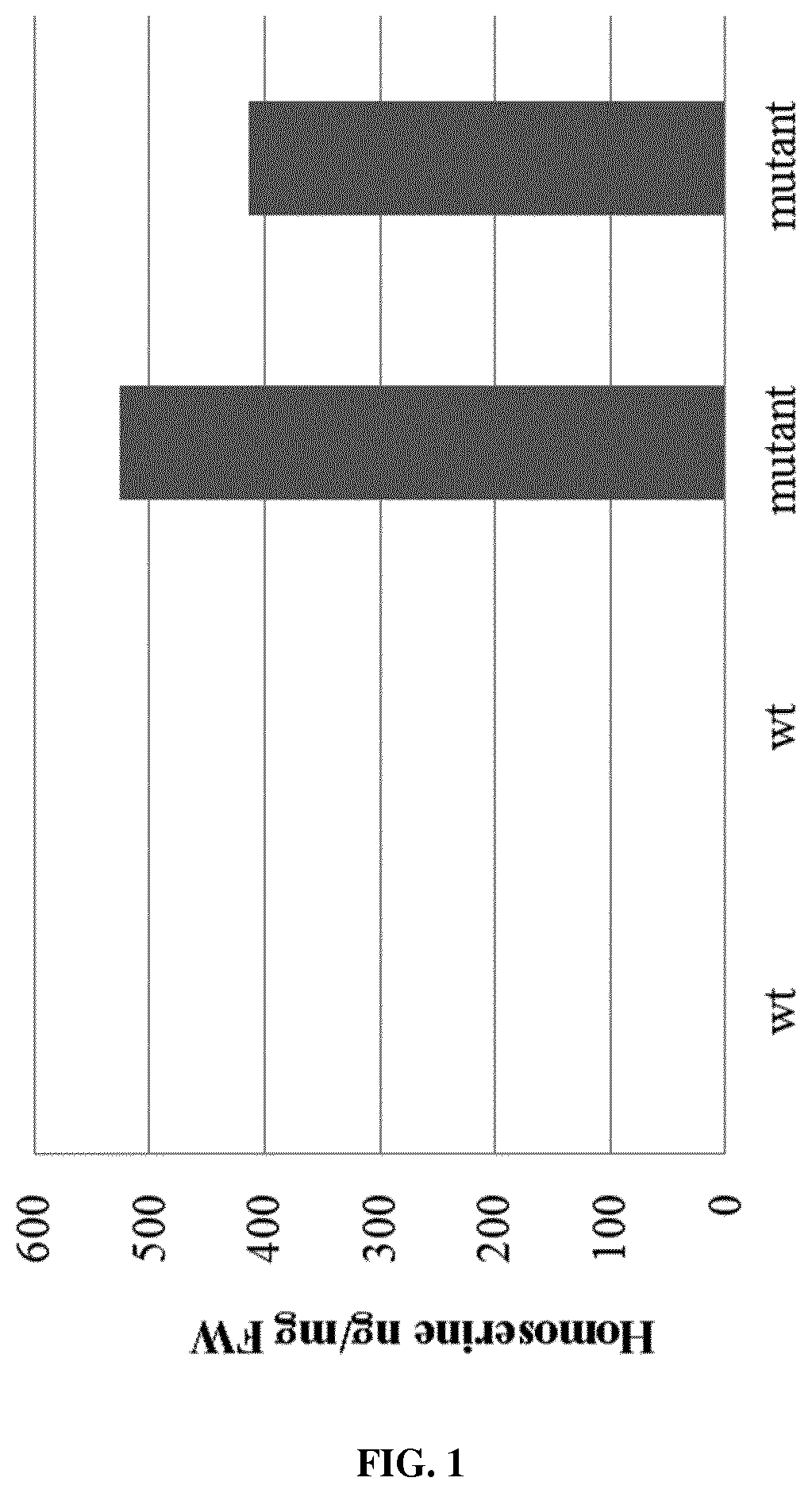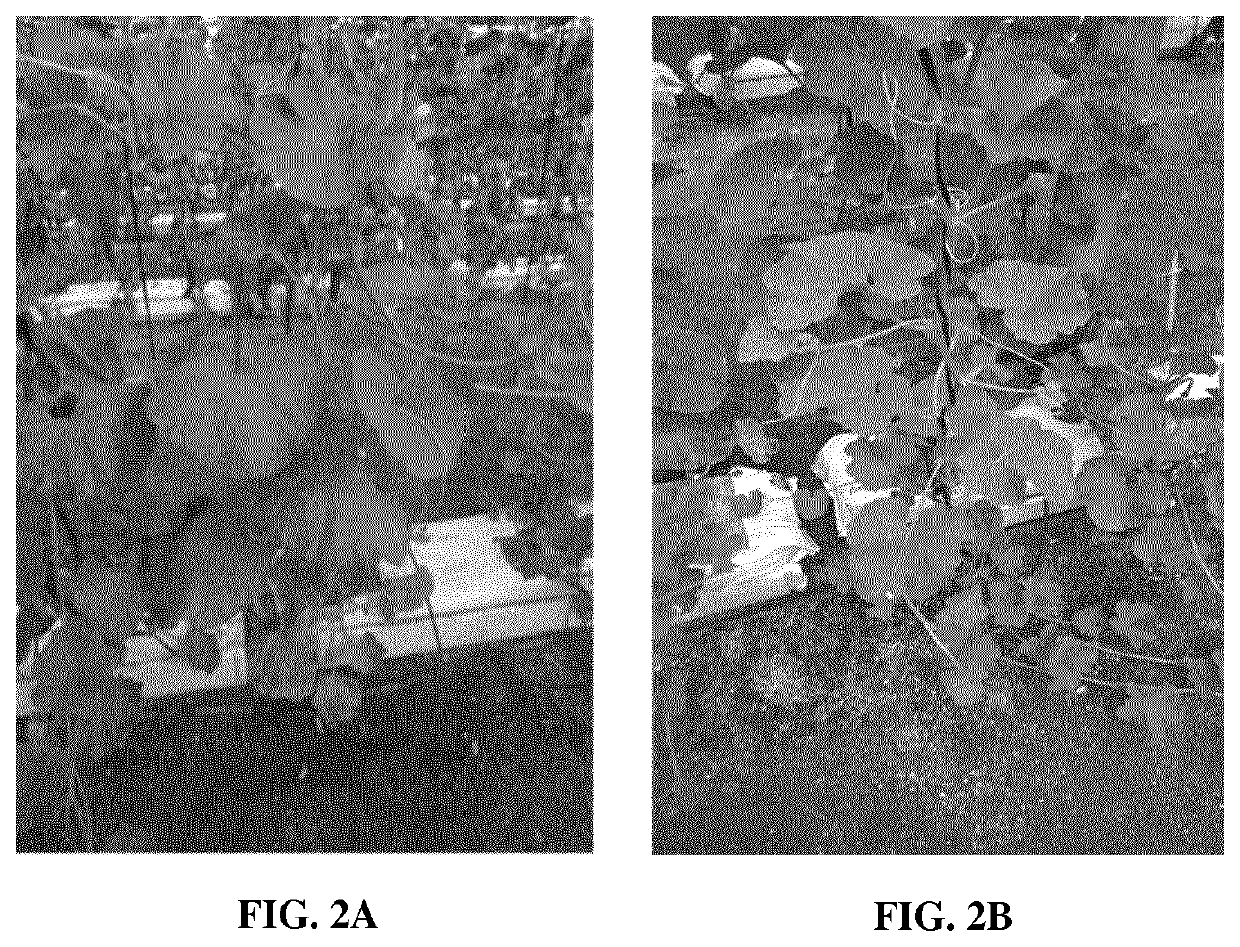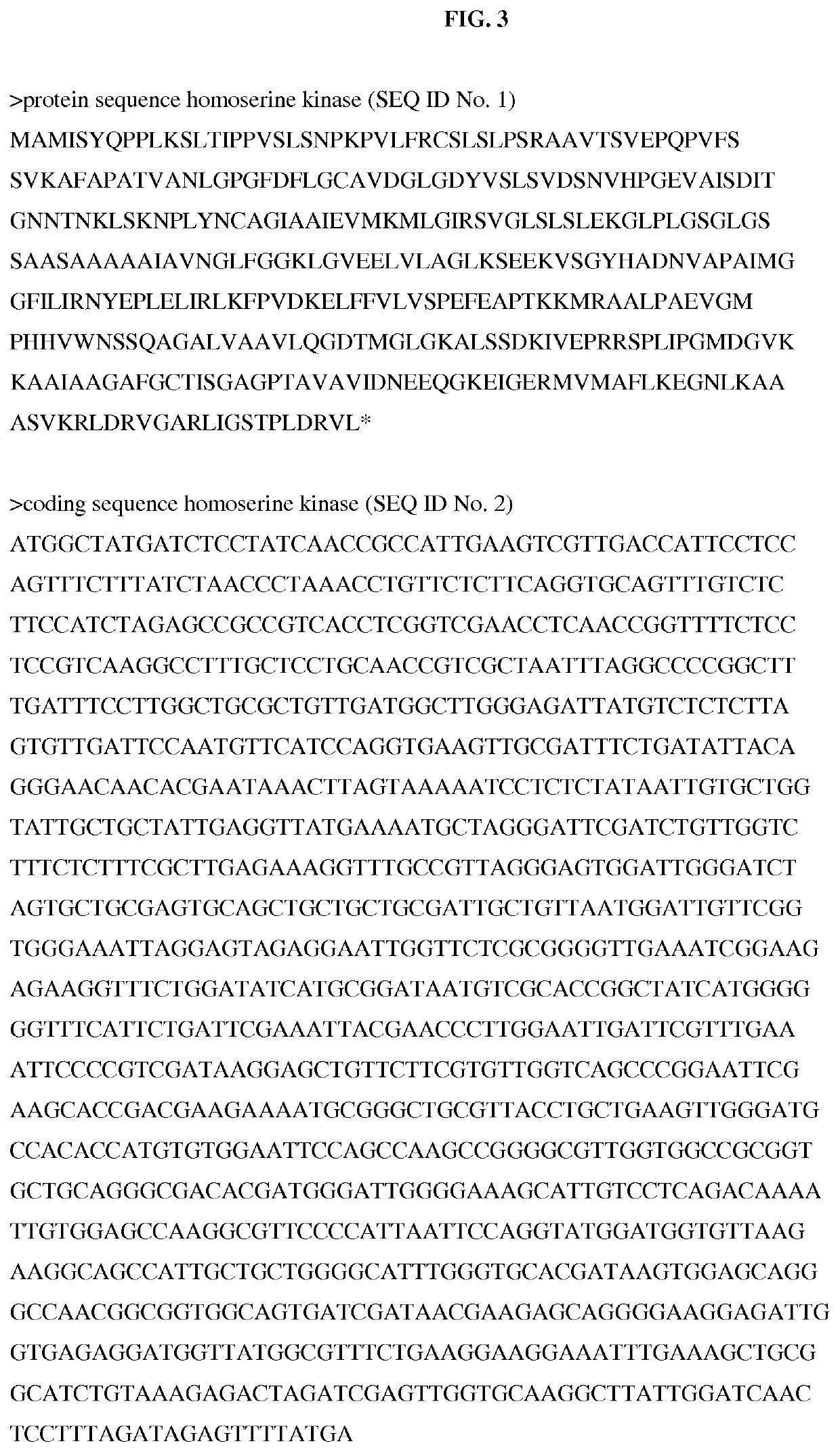Downy mildew resistant melon plants
a technology of melon plants and resistant to mildew, which is applied in the direction of biochemistry, enzymology, transferases, etc., can solve the problems of mutant plants severely affecting development, affecting the development of viable and commercially interesting plants, and direct interference with the biosynthesis of essential amino acids and overall plant vigour
- Summary
- Abstract
- Description
- Claims
- Application Information
AI Technical Summary
Benefits of technology
Problems solved by technology
Method used
Image
Examples
example 1
n of HSK A349T Mutant Cucumis melo Plants
[0073]Seeds of melon variety Védrantais were treated with the mutagenic agent Ethyl Methanesulfonate (EMS) in order to introduce random point mutations. The HSK (dmr1) gene located on chromosome 1 was the target gene for the introduction of random point mutations. Mutated plants were grown to produce seeds and the next generation was screened for increased accumulation of homoserine. This was achieved by measuring levels of the amino acid homoserine. In addition, samples were taken from the top of the developing shoots of the melon plants for further molecular analysis, i.e., the detection of mutations in candidate genes as described by Van Eijk and Van Tunen in EP 1929039.
[0074]This process identified the A349T mutant, which was selected. The A349T mutation was an Alanine (A) to Threonine (T) amino acid substitution at a position corresponding to amino acid 349 of the HSK protein (WT HSK protein sequence=SEQ ID NO: 1; mutant A349T HSK protei...
example 2
dew (Pseudoperonospora cubensis) Infection Assay
[0076]Wild type and A349T mutant melon (Cucumis melo) plants (Vedrantais melon) were infected with downy mildew (Pseudoperonospora cubensis). For A349T mutants, both heterozygous and homozygous plants were tested (zygosity of the plants was determined by the presence of the G1045A mutation). Infection with P. cubensis was done when the plants had 5-8 leaves.
[0077]The first disease scoring was done 24 to 31 days after infection. Disease scoring was then performed for 4 weeks, and measurements were taken once per week on a wild type (WT) plant, an A349T heterozygous (HE) plant, and an A349T homozygous (HO) plant. Table 1 provides a detailed description of the disease scoring scale used in the infection assay. Briefly, disease scoring was performed on the scale of 1 to 8, where a score of 1 meant plants were fully susceptible and showed necrosis while a score of 8 meant plants were fully resistant and showed no symptoms of infection.
TABLE...
example 3
ildew (Podosphaera xanthii) Infection Assay
[0079]Wild type and A349T mutant melon (Cucumis melo) plants (Vedrantais melon) were infected with powdery mildew (Podosphaera xanthii). Infection with Podosphaera xanthii was done when the plants had 5-8 leaves.
[0080]The first disease scoring was done 24 to 31 days after infection on a wild type (WT) plant, a mutant plant. Table 3 provides a detailed description of the disease scoring scale used in the powdery mildew infection assay. Briefly, disease scoring was performed on the scale of 1 to 8, where a score of 1 meant plants were fully susceptible and showed necrosis while a score of 8 meant plants were fully resistant and showed no symptoms of infection.
TABLE 3Powdery mildew assay scoring scaleLower surface ofScoreleaf phenotypeUpper surface of leaf phenotype1Heavy sporulationCompletely white sporulation with dry areas2Heavy sporulationWhite sporulation that cover more than 85%of the surface3Heavy sporulationWhite sporulation that cover...
PUM
| Property | Measurement | Unit |
|---|---|---|
| Dimensionless property | aaaaa | aaaaa |
| Dimensionless property | aaaaa | aaaaa |
| Dimensionless property | aaaaa | aaaaa |
Abstract
Description
Claims
Application Information
 Login to View More
Login to View More - R&D
- Intellectual Property
- Life Sciences
- Materials
- Tech Scout
- Unparalleled Data Quality
- Higher Quality Content
- 60% Fewer Hallucinations
Browse by: Latest US Patents, China's latest patents, Technical Efficacy Thesaurus, Application Domain, Technology Topic, Popular Technical Reports.
© 2025 PatSnap. All rights reserved.Legal|Privacy policy|Modern Slavery Act Transparency Statement|Sitemap|About US| Contact US: help@patsnap.com



